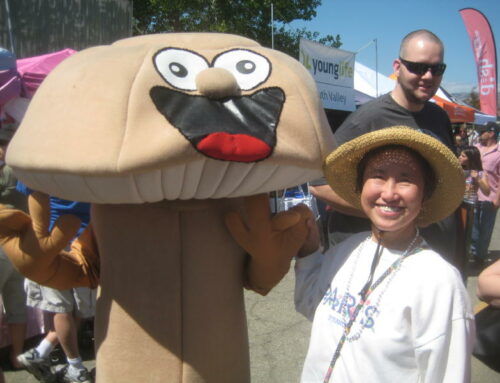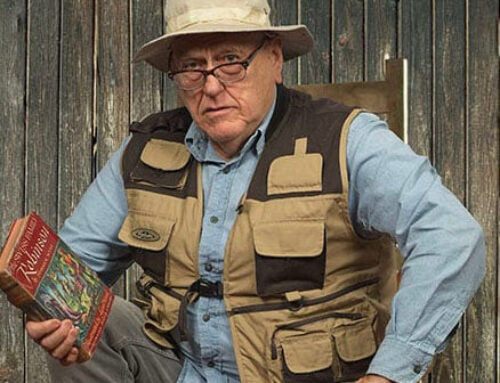Craft can be traced back 8,000 years to the Egyptians
Published in the Oct. 29 – Nov. 11, 2014 issue of Morgan Hill Life
By Staff Report

A spiral weave with dyed straw flowers took first place at the California State Fair, Fine Arts.
Photos courtesy Christine Busch Swanson
Christine Busch Swanson grew up on a walnut orchard in Paradise Valley on Oak Glenn Avenue. After moving to Santa Clara to be closer to high tech work, she often visited her parent’s farm to help out.
On one of those visits nearly two decades ago she was helping her dad, Frank Busch, cut wheat using his antique farm equipment. The wheat in the field had a natural beauty and Swanson wanted to find something creative to do with it. She did some research and found a lady in Berkeley, Nan Rohan, who taught wheat weaving.
Swanson made that trip to Berkeley and took a few classes, got a few books on the subject and started making creations out of wheat. Now, the Live Oak High School alumni is one of 150 or so straw artists in North America and has won several awards with her straw art and has a few pieces in the American Museum of Straw Art in Long Beach. (www.strawartmuesum.org)
The art of “wheat weaving” has a long history. It has been traced back more than 8,000 years to the Egyptians, who were weaving with it long before they knew it was a food source. Straw art has been found on every continent and culture around the world which consumed grains.
In early European cultures during a time when farmers were more at risk from the whims of Mother Nature, farmers believed that spirits lived in the grain. They took great care to capture and preserve these spirits so at harvest time, the last sheaf of wheat to be cut was set aside and from the straw, traditional symbols were woven from the wheat and hung in the home to keep the spirits safe during the winter. In the spring, the woven objects were returned to the field, usually plowed into the soil, thus returning and reawakening the spirits back to the earth to ensure a bountiful harvest.
As harvesting became mechanized, wheat weaving all but died out. It was revived in England and on the East Coast in the late 1800s and early 1900s for the straw hat industry. Prisoners and children would spend the day weaving the straw into long plaits and this plait was used to make the hats. A bit earlier, during the 1300s, straw was also split and twisted together to make golden straw thread that was used in gowns.
Wheat weaving, or straw art, did not come to the United States until the 1970s. It was a craft introduced in Kansas. Swanson belongs to the National Association of Wheat Weavers and the California Straw Art Guild; both organizations are working to preserve this beautiful and unusual art. Wheat itself conveys many meanings including good luck, love, abundance, hope friendship and fertility. With straw art, the items represent people’s desires in life from ancient time to the present.
Those interested in wheat weaving or want to purchase a piece, Swanson’s straw art will be featured at the Machado Craft Fair Dec. 1. The fair runs from 9 a.m. to 4 p.m. at Machado School, 15130 Sycamore Drive. There will be more booths this year, giving visitors a wide variety of handmade crafts, jewelry, baby gifts, floral arrangements and one of a kind gift items from which to choose while enjoying the charm of the original 1895 building.
A portion of the sales will benefit the Machado School Heritage Society. Several vendors will also donate some of their proceeds to local causes and youth will host some of the booths.
The latter includes last year’s very popular beeswax candle and honey booth run by a young South County 4-Her who used her proceeds to pay off her beekeeping equipment loan. The youth members of the San Martin 4-H Club will have refreshments available.





